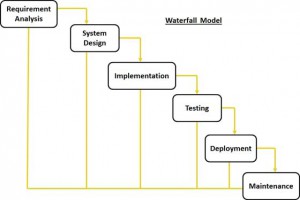chapter 9
Five signs you should consider outsourcing your IT
http://www.bizjournals.com/boston/feature/5-things/2015/06/five-signs-you-should-consider-outsourcing-your.html?iana=ind_tech
One of the topics discussed in chapter 9 is acquiring information systems. The book explains how companies acquire information systems from outsourcing. In the article, “Five Signs You Should Consider Outsourcing Your IT”, written by Diego Rosenfeld, the author talks about when the companies should consider outsourcing some or all of the components of their IT function. The reasons that companies are outsourcing IT function is to save money, improve performance, add scalability, and get access to strategic IT thinkers. The article points out five signs when the companies need outsourcing
1. Can’t keep up
Broader IT road map includes strategic thinking about issues like how to leverage the cloud and how to select and manage the highest-impact systems and project. Thus, the companies should consider outsourcing when they cannot keep up with technology changes.
2.Anticipating growth
The companies need more diverse IT skill sets as companies grow. Outsourcing will bring the companies broader spectrum of IT skills such as system analysts, database experts, report writers, help desk, system administrators and strategic thinkers.
3.High turnover
There are limited talented IT resources and they are in high demand. For most of the companies, it is hard to retain talented IT resources internally and having only one person with key technical skills creates risk to the business. In the article, Diego says “external provider with scale and a track record of continuity mitigates the risk of a shallow internal resource pool. You’re not just buying a consultant, you’re buying a firm.” Thus, the companies can decrease their risks and increase their opportunities by outsourcing.
4.Performance and stability issues
The companies should consider outsourcing when the companies are having problems in recurring performances and stability issues with critical IT systems. Outsourcing will help the companies in managing IT systems with deeper expertise.
5.Around-the-clock and multi-location coverage
Many companies and their employees run around the clock and the globe, which means that you need IT resources available 24/7 year round and on-site for emergencies. By outsourcing IT, the companies can have service desks that run 24/7.
In summary, there are many inflection points that may lead organizations to outsource some or all of their IT functions, for example:
- Interruptions in service
- Departures of key personnel
- Expansion plans
- New strategic initiatives
As Diego says in the article, modern IT outsourcing providers provide skill, scale and strategic vision to help growing businesses focus on their business while they focus on running the IT foundation that makes it possible.
Questions:
- Is there any other signs that the companies should consider outsourcing services?
- What are the other benefits of outsourcing IT services?
- What are the risks of outsourcing IT services?
SDLC vs. The Chaotic Evolution of Technology (System Development Life Cycle)
http://www.computerworld.com/article/2576450/app-development/system-development-life-cycle.html
One of the topics discussed in Chapter 9 of Information Systems Today describes the systems development life cycle and its four primary stages:
- Systems planning and selection
- Systems analysis
- Systems design
- Systems implementation and operation
In the article System Development Life Cycle, written by Russel Kay, he mentions a number of system development life cycle (SDLC) models that were developed in order to make it easier to manage todays much larger and complex systems, allowing teams to work more efficiently in parallel.
The oldest and best known of these is the waterfall model, which is very similar to the process described by Valacich. But even though this model is well understood, Kay argues that it’s not as useful as it used to be. In a 1991 Information Center Quarterly article, Larry Runge stated that SDLC “works very well when we are automating the activities of clerks and accountants. It doesn’t work nearly as well, if at all, when building systems for knowledge workers — people at help desks, experts trying to solve problems, or executives trying to lead their company into the Fortune 100.”
Another issue is that the waterfall model operates under the assumption that the only role for users is in specifying requirements, and that the requirements can be specified in advance. The problem here is that requirements grow and change throughout the entire process, which calls for extensive feedback and iterative consolation.
As a result of trying to solve these types of issues, these others SDLC models have been developed: waterfall, fountain, spiral, build and fix, rapid prototyping, incremental, and synchronize and stabilize.
Questions:
1. Can you recall something you’ve heard or read where a company applied some sort of SDLC?
2. Do you think more complex models of SDLC will be introduced with technologies fast paced evolution?
3. Can you think of an example of any positions or industries where the water fall module would not be suitable?


